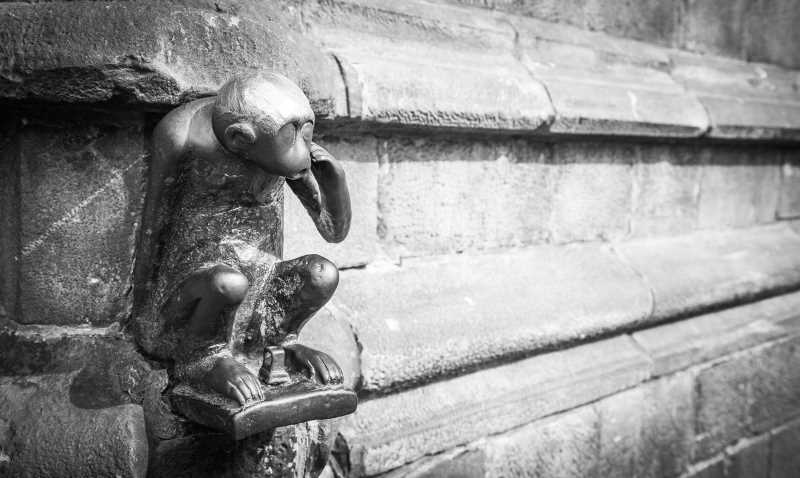Researchers from the University of Mons (Belgium) discovered that the Grand’Garde Monkey on the façade of Mons Town Hall is made of low-carbon steel, which led them to learn that the statue dates back to the 15th century.
The Metallurgy Department of Mons Polytechnic Faculty (University of Mons – Belgium) just discovered that the body of the Grand’Garde Monkey, a statue that is part of the Town Hall’s façade, is made of low-carbon steel. This confirms its age, dating it to the 15th century. This discovery comes just after the Metallurgy Department received authorisation last September to take a sample (around 1 gramme) from the statue’s body to analyse its carbon content.
This figure of a small monkey, also referred to as the “monkey of the Grand Garde,” is one of Mons’ most recognisable emblems. Since folklore in Mons holds that patting the small monkey’s head at the Town Hall will bring good fortune, it has become a tourist attraction. His skull has been repeatedly rubbed by city residents and tourists, leaving it shiny.
The chemical analysis took place at the Centre Terre et Pierre in Tournai. The results prove that the monkey’s body is made of low-carbon steel, with the sample containing around 0.1% carbon by weight. As a reminder, steel contains less than 2% carbon by weight, and ferrous cast iron more than 2% by weight. Researchers could deduce that the Monkey of the Grand’Garde may date from the mid-15th century, when the Mons region was at its peak in the manufacture of forged “low-furnace” iron.
Steel obtained by the “low-furnace” process does not pass through the liquid state, as the maximum temperature obtained is only 1,100°C (it was not possible to melt steel until around the 17th century). This process consists in the direct reduction of small pieces of ore into small pieces of iron by the combustion of charcoal, which leads to the agglomeration of these pieces of iron during reduction, resulting in the formation of a more or less dense sponge known as a “burr”. This iron burr contains numerous defects, such as slag, charcoal lumps and the presence of small cavities.
At a conference given by Prof. Fabienne Delaunois at the Artothèque de Mons on 16 February 2023 to present these results, some of those present expressed doubts about the nature of the material used. According to the skeptics, it was impossible to make a statue of this type in forged steel. The Monkey therefore had to be made of ferrous cast iron and cast in a mold. Recent discoveries by the Metallurgy Department prove otherwise.





